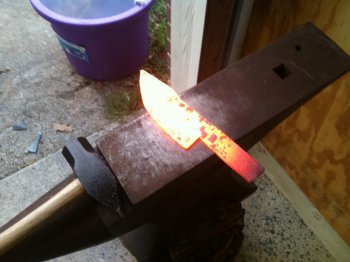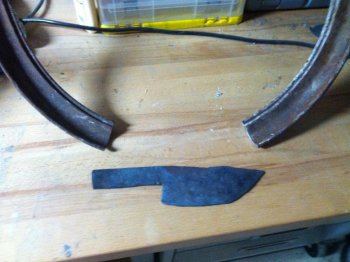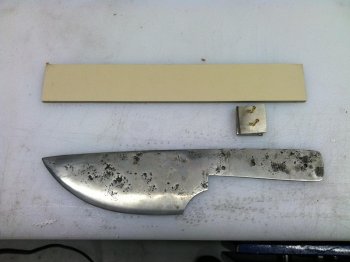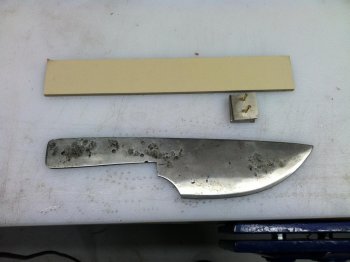Bruce, based on what I know about the split rim, it is a high carbon spring steel. It seems to have finished pretty well, but my ignorance is evident here. I tried to find out the content of the steel but after a couple of hours down the rabbit hole I gave up and went to the shop. I will definitely do a quench test on the next one I hammer out, thank you for that advise. I really do appreciate you taking the time to mentor and educate. I have read this forum so much I feel like I'm back in college. I can't get enough of it.
As to the other questions, I am really working primitively here. I have a forced air induction forge, but no heat treat oven so I cut off a piece of the ring, heated it up in the forge and hammered it out. Letting it cool out, I assumed I was normalizing it(please advise). It seemed to be workable(in an annealed state, please advise) and I was able to grind and shape it as I do on my stock removal blades, and drill it for bolsters and scales. I then put it back in the forge(no idea as to the temp) and heated to non-magnetic and quenched in clear frying oil I got from Sams(probably to light, please advise). This is the same procedure I have been using on my stock removal 1084 blades and 01 blades. The 01 blades are standing up very well(competition throwers) and the 1084 blades are pretty good other than some warping and a break at a reintrant corner(I have learned not to do this anymore). Thanks a ton for your help Bruce, I had almost given up on getting any response here, I figured everyone was laughing so hard they were incapable of typing on their keyboard. The little knife did get pretty hard based on how it reacted to the sanding belts in the final grind and how it flexed while wet sanding and polishing it. I look forward to your response, -Dave









